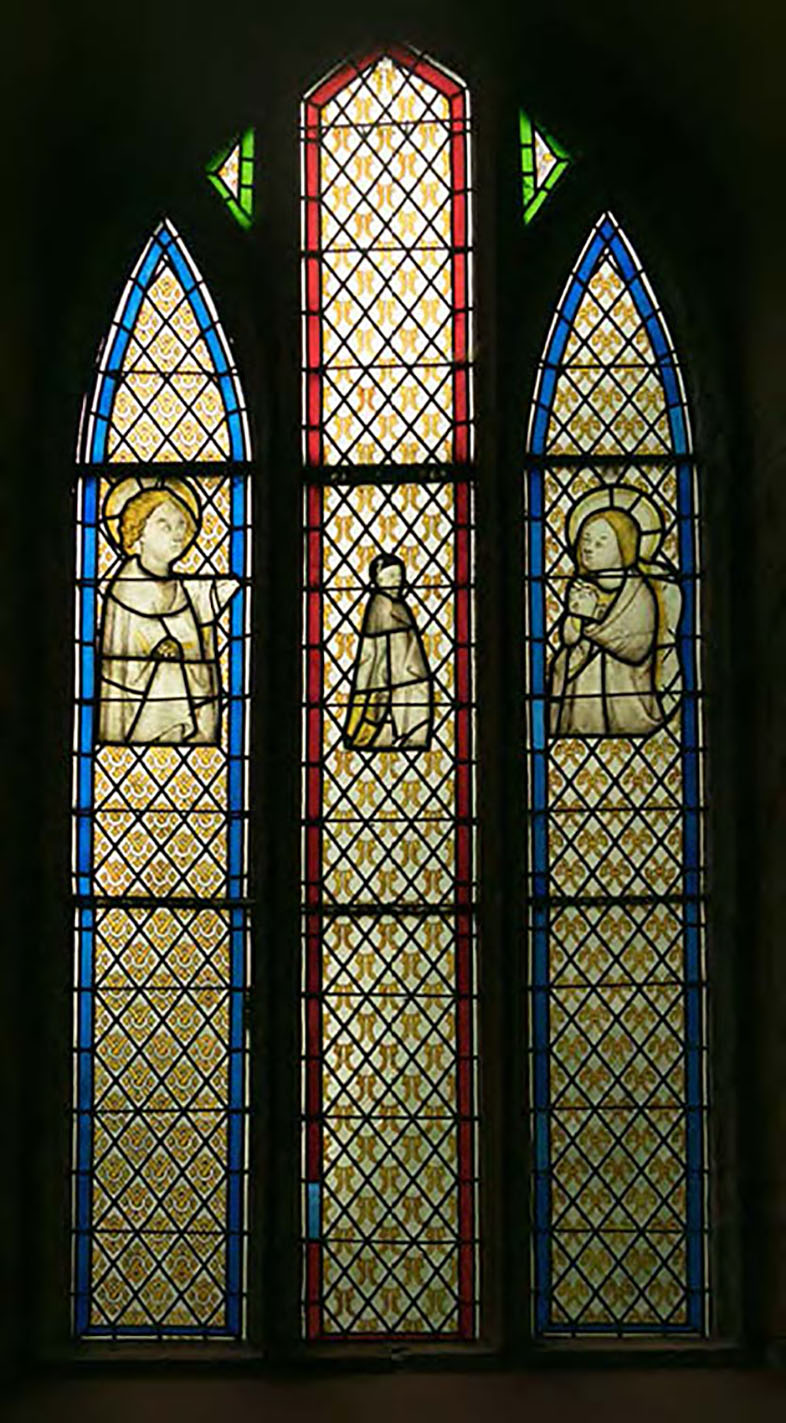In October Jim Budd carried out a survey of the glass of the east window of the chancel.
The window is of three main lights with figures in the glass of each of them. The figures are set into late nineteenth quarries (diamond-shaped panes of glass in leaded windows), but are themselves considerably older. The whole window would have been constructed at the time that Rev William Poole was making his improvements to the church, but the window is not necessarily associated with John Pollard Seddon, the architect responsible for the St Dubricius decorative scheme, the construction of the Italianate church at Hoarwithy, and several other buildings in the parish.
The re-used figures in the window appear to have been created in the earlier 15th century, a date not inconsistent with the story that the glass survives from a window glazed by Richard of Rotherham. It is very likely that the figures were placed here from elsewhere.

figure in centre light
Stained-glass windows first appeared in churches in England as early as the 7th century. In 675 AD Benedict Biscop, the founder and abbot of Monkwearmouth–Jarrow Abbey, imported workmen from France to glaze windows.
'Broad' glass was made by taking molten glass and blowing it into a cylinder shape using a blow-pipe. The ends were cut off, the cylinder split open, and the hot glass unrolled and cut to shape. 'Crown' glass was blown into hollow bubble (the 'crown'). This was then spun round and round to form a flat disk. Both types are present at St Dubricius.
Glass could be plain or coloured. Various colours produced by the addition of copper oxide to the glass depended on the different levels of oxidation of the added copper. The glass could also be painted, and all three figures in the Hentland window have been painted.
The glass in the chancel east window is considered to be of particular significance. It is strongly reminiscent of the work of John Thornton's workshop in Coventry. Thornton was responsible for some of the most outstanding stained glass ever produced, most notably the early fifteenth century great east window at York Minster. His Coventry workshop produced stained glass for a number of Midlands churches.
The central figure in the window at Hentland is thought likely to represent Richard of Rotherham. Richard of Rotherham was Vicar of Lugwardine (and as such the priest responsible for Hentland, which was a chapel of Lugwardine) in the earlier 15th century.
The existing roofs of the nave and the chancel date from this period, as does the north aisle; and it is likely that Richard was responsible for this work. Many medieval church windows include representations of their sponsors
The figures in the left and right lights are believed to have originally been part of a crucifixion group in which the central figure would have been of Christ on the cross. Traditionally the figures themselves would be the Virgin Mary on the left and St John the Evangelist on the right.
